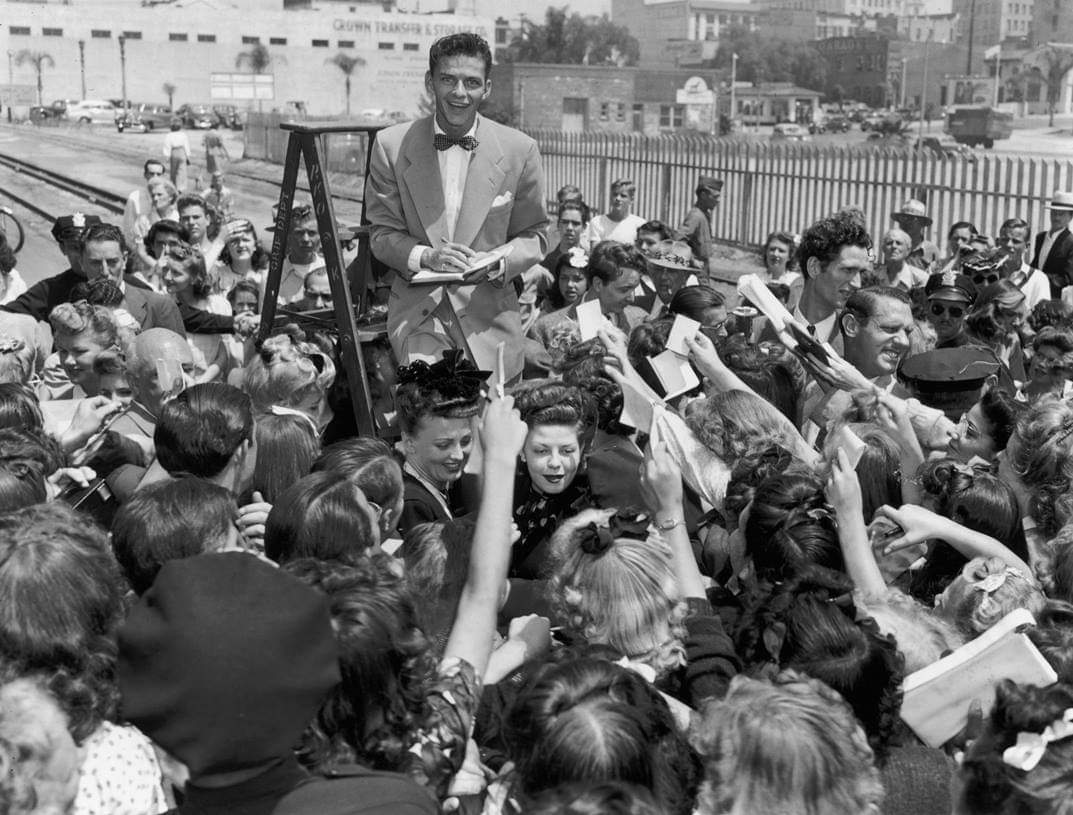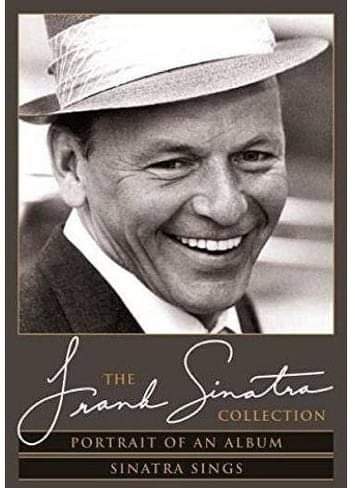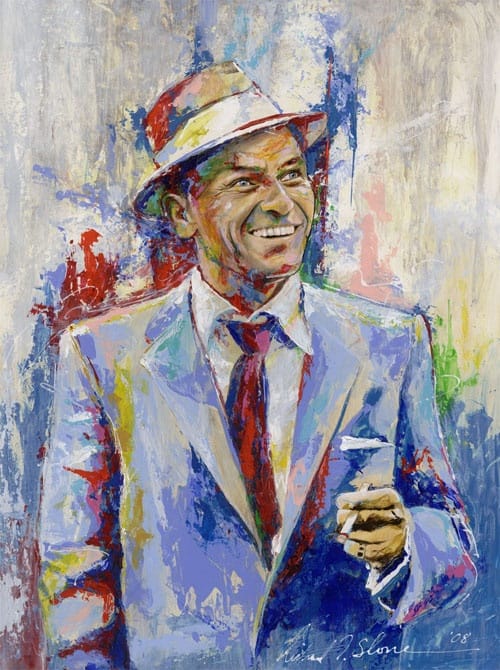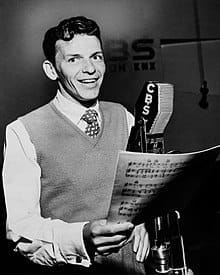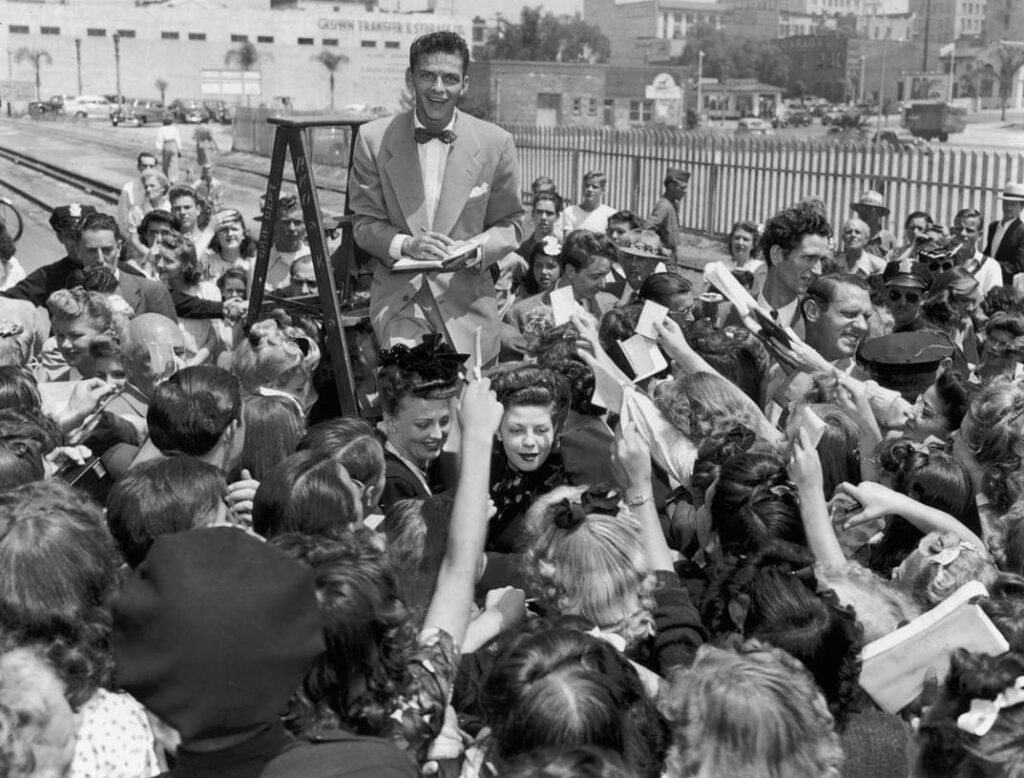
A REFLECTION ON THE FAN PHENOMENON THAT (MAYBE) YOU ARE NOT GOING TO LIKE
By Mahnuel Muñoz
In January 1944, Arthur Rodzinski, the director of the New York Philharmonic Orchestra, said: “Boogie woogie that young people like is the greatest cause of delinquency among American youth today.” Ten years later the same will be said of Rock And Roll. In the 1960s, the bad guys in the movie would be, to name a couple of examples, the Rolling Stones and hippie culture… and so we can continue to this day, with trap and reggaeton. Each generation has its “anti-music” to which responsibility for cultural and social degradation is attributed. But each new musical current is a consequence of the time in which it originates, it covers the needs of the society of that time, and to do so it needs to displace its predecessors, with the logical generational clash.
In October 1944, Frank Sinatra gave a historic concert at the Paramount Theater in New York that marked his definitive consecration as a singing star and cultural icon. The expectation that was generated around the event was so great that tens of thousands of people collapsed Times Square and caused riots, traffic cuts, and the intervention of all law enforcement agencies became necessary. And Frank sang about romantic love.
Reactions to these events were mixed. Conservatives, the middle-aged public, and the establishment saw Frank as a threat and, at best, a passing phenomenon. He doubted his artistic qualities and dismissed his fans as immature girls incapable of controlling his primal instincts. Does it sound familiar to you?
The fans naturally closed ranks around his idol and there were even those who wrote to the newspapers to comment on Sinatra’s fierce defenses. Frank’s great gift was, at that time and throughout his career, making listening to him, seeing him, feeling him, a deeply personal experience; Each woman believed that he sang exclusively for her; each man felt a little bit Sinatra. I suppose the same thing happens to the most devoted followers of the current pop star, the one that the older ones insist on attacking.
“We have to try to understand American youth. They are accustomed to a carefree youth; however, they accept their obligations as men and women when adulthood arrives. Therefore, let these young women swoon over Sinatra in this feverish atmosphere of war. Let’s have more faith in those young people and thank God that they align themselves with a Sinatra instead of a Hitler.”
This last fragment belongs to a letter written by Narciso Puente to the New York Times and published on October 16, 1944. The letter encapsulates Sinatramania, the outpouring of affection for a youth idol, a novelty for the public of the 1940s, but that has been repeated under different varnishes throughout the history of music, and a convenient point on which to begin a reflection. Frank Sinatra was an innovative and extraordinary artist, but the hysteria he caused around him was magnified by World War II. Millions of young American women found in Sinatra the personification of all the men of the nation who went to fight. Frank was a thin and not particularly attractive boy, especially if we compare him with the leading men of the cinema of that time, but it was precisely that normality, that apparent vulnerability, that made Sinatra the object of desire of the pining bobbysoxers who had their parents or boyfriends dying for the country on the battlefield
Later, the new youth idols lived that same process, contributing, in addition to their sound, what youth longed for themselves: Elvis brought sex and danger; Beatles, the chic of Britishness and the concept of “gang” that was beginning to prevail over the individual; The mercurial black sound of the 60s, 70s and 80s gave African Americans the notion of a social status closer to that of whites and at the same time a forceful tool of struggle… and a miriametric etcetera.
And today trap, hip hop and reggaeton provide mental escape and sexual pulse to a discordant and unmotivated youth, homologous to those who embraced rock and roll in the fifties, punk in the seventies and grunge in the nineties. . I am not talking about musical quality or transcendent quality; Music is always, at first, an uncontrollable here and now, which later expires or becomes part of the cultural heritage of the people, under equally unpredictable parameters.
The ingredients that make up a youth idol are an irresistible cocktail that seduces the emotions. And where the heart rules, the brain does not rule.
If you want to visit more articles about the life of Frank Sinatra enter the following Sinatra Radio 24h link: https://sinatraradio24h.com/category/articles/
We remind you that you can also listen to Sinatra Radio 24 hours on your mobile phone by downloading our free applications for Android in the Play Store https://play.google.com/store/apps/details?id=sinatra.radio24h

